In figure two points A and B are located in a region of electric field . The potential difference VB−VA is
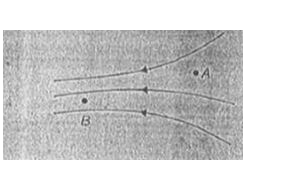
Positive
Negative
Zero
None of these
Anwer (2)
VB<VA⇒VB−VA<0.
Similar Questions
Consider
 .
.
The potential difference VA−VB is.View SolutionThe work done in carrying a charge of 5μC form a point A to a point B in an electric field is 10mJ. The potential difference (VB−VA) is then
View SolutionTwo points A and B are located in a region of space containing electric field as shown in the figure. As we move from A to B, the potentia
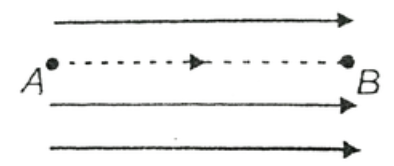 View Solution
View SolutionPotential difference VB−VA in the network shown is
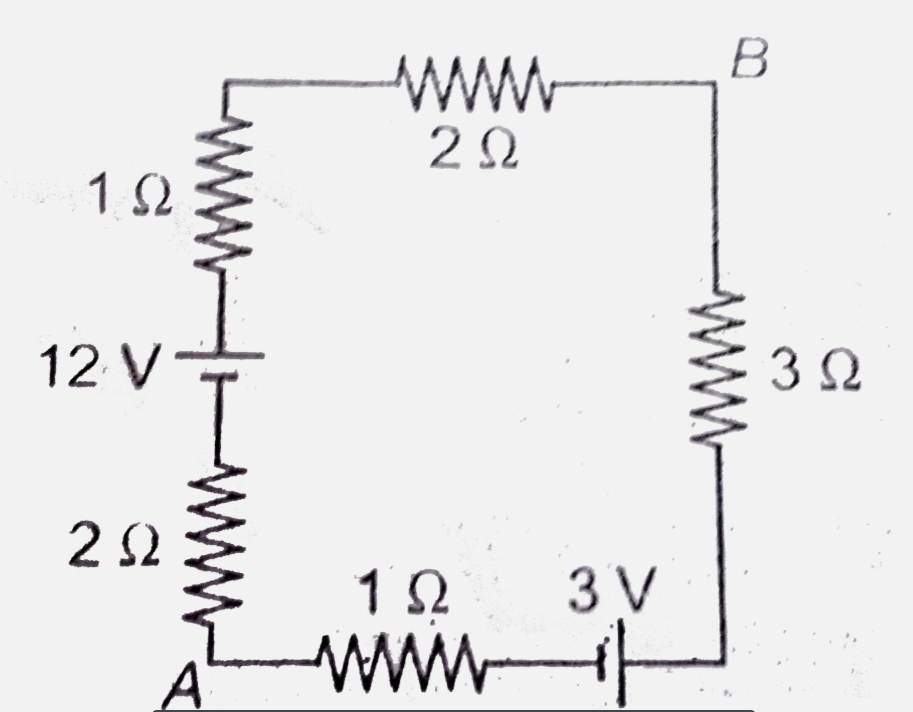 View Solution
View SolutionA combination of five resistors are connected to a cell of emf 10 V as shown in figure. The potential difference VB−VE will be .
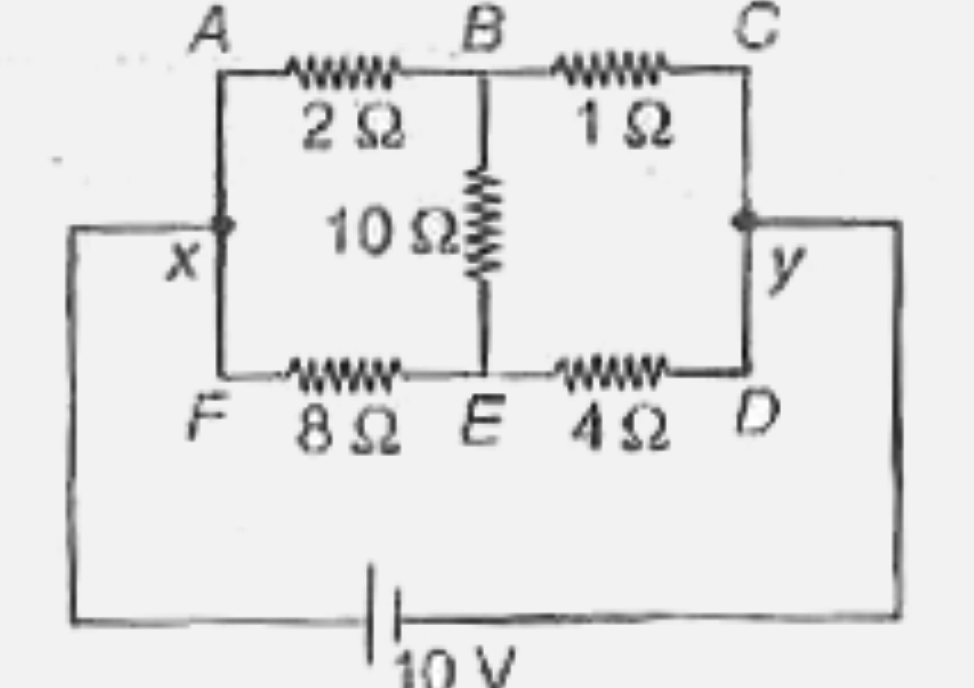 View Solution
View SolutionAn infinitely long line of linear charge density λ is shown in the figure. The potential difference VA−VB between the two points A and B is
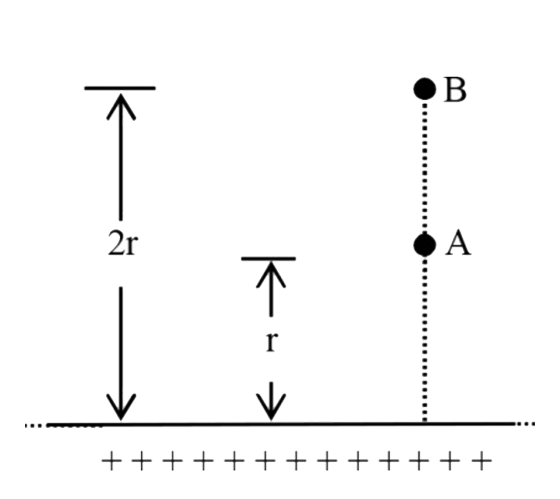 View Solution
View SolutionFigure shown three points A,B and C in a region of unifrom electric field →E. The line AB is perpendicular and BC is parallel to the field lines. Then which of the following holds good. Where VA,VB and VC represenet the electric potential at points A,B and C respectively
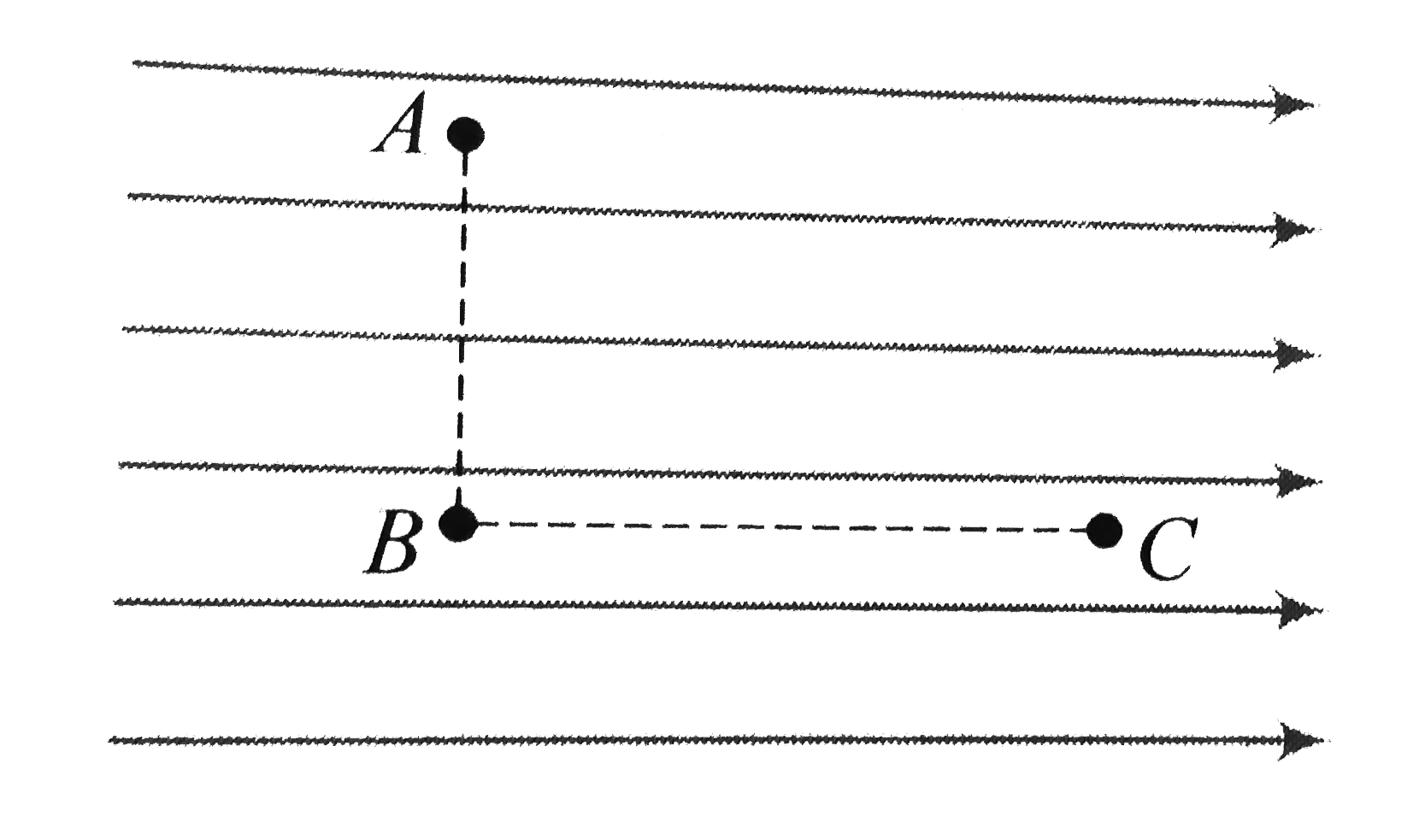 View Solution
View SolutionPotential difference across AB , i.e., VA−VB is
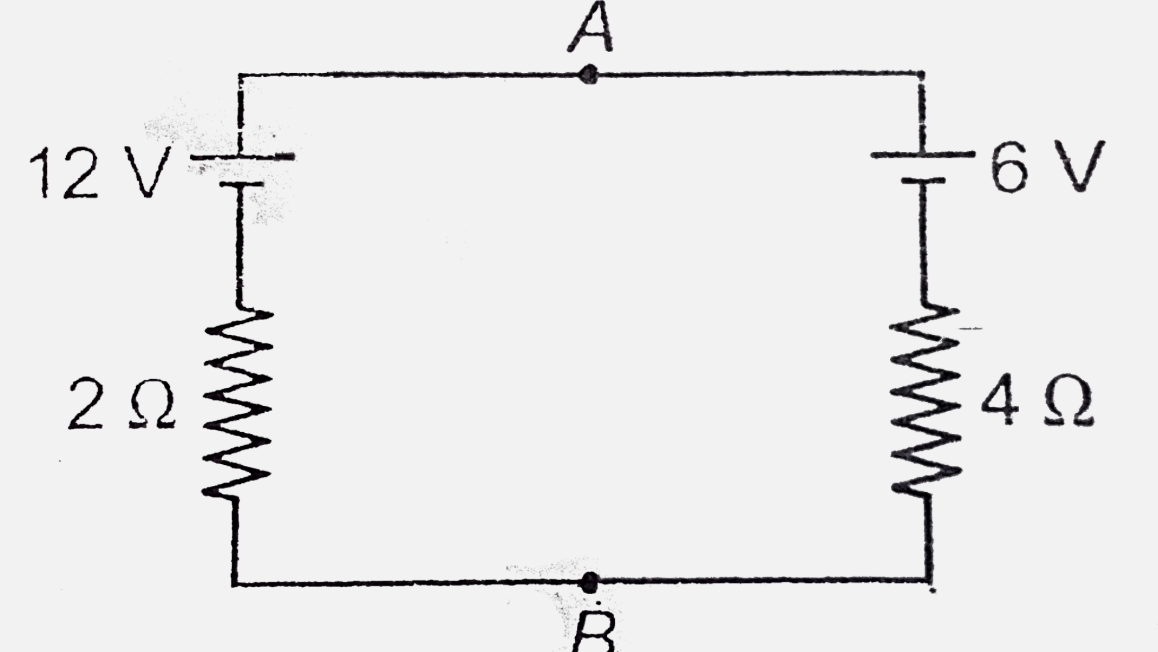 View Solution
View SolutionWhen the current in the portion of the circuit shown in the figure is 2A and increasing at the rate of 1A/s,the measured potential difference Va−Vb=8V.However when the current is 2A and decreasing at the rate of 1A/s, the measured potential difference Va−Vb=4V.The values of R and L are:
 View Solution
View SolutionA uniform electric field of 400Vm is directed at 45∘ above the x-axis as shown in the figure. The potential difference VA−VB is given by
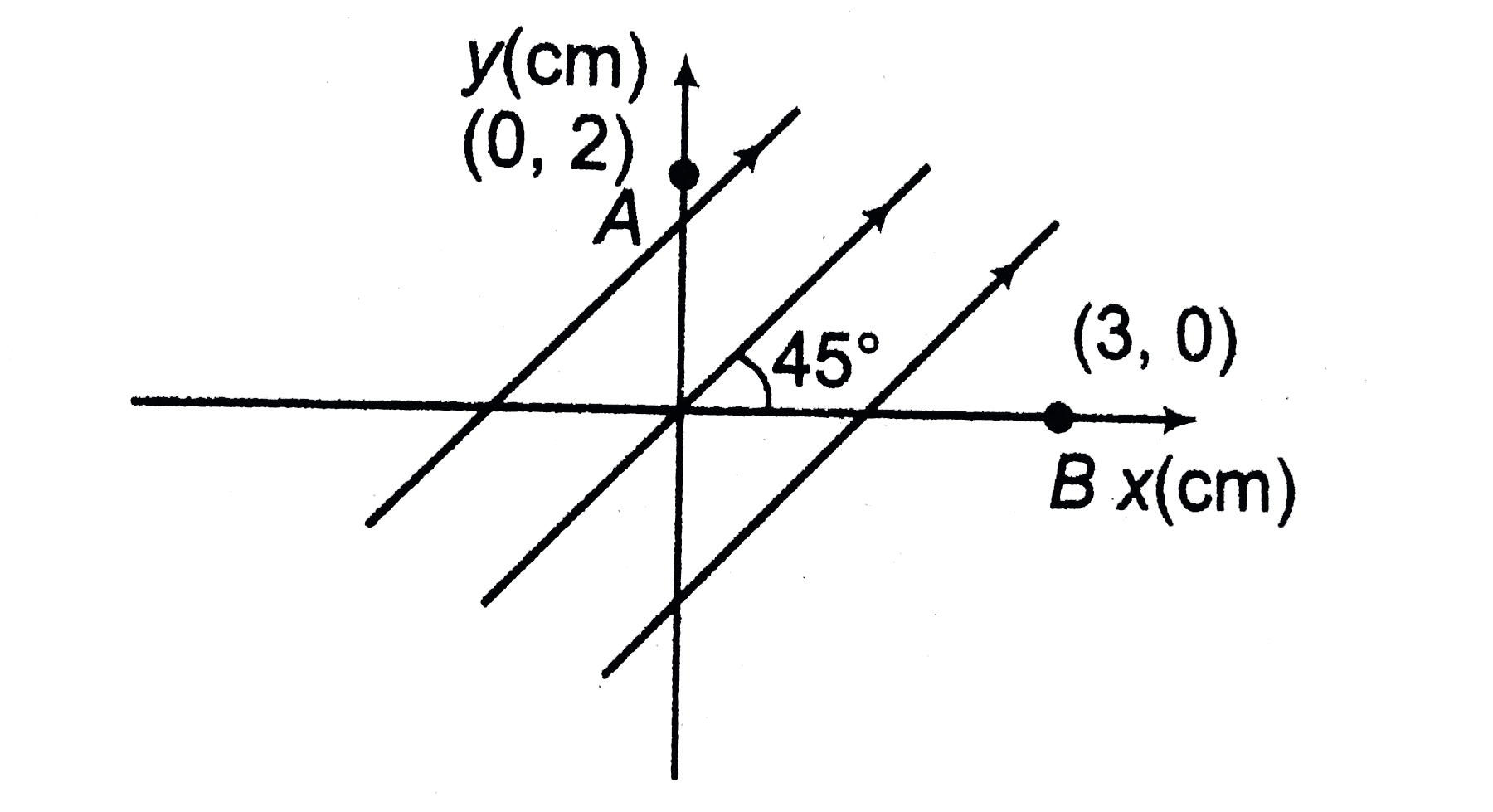 View Solution
View Solution
